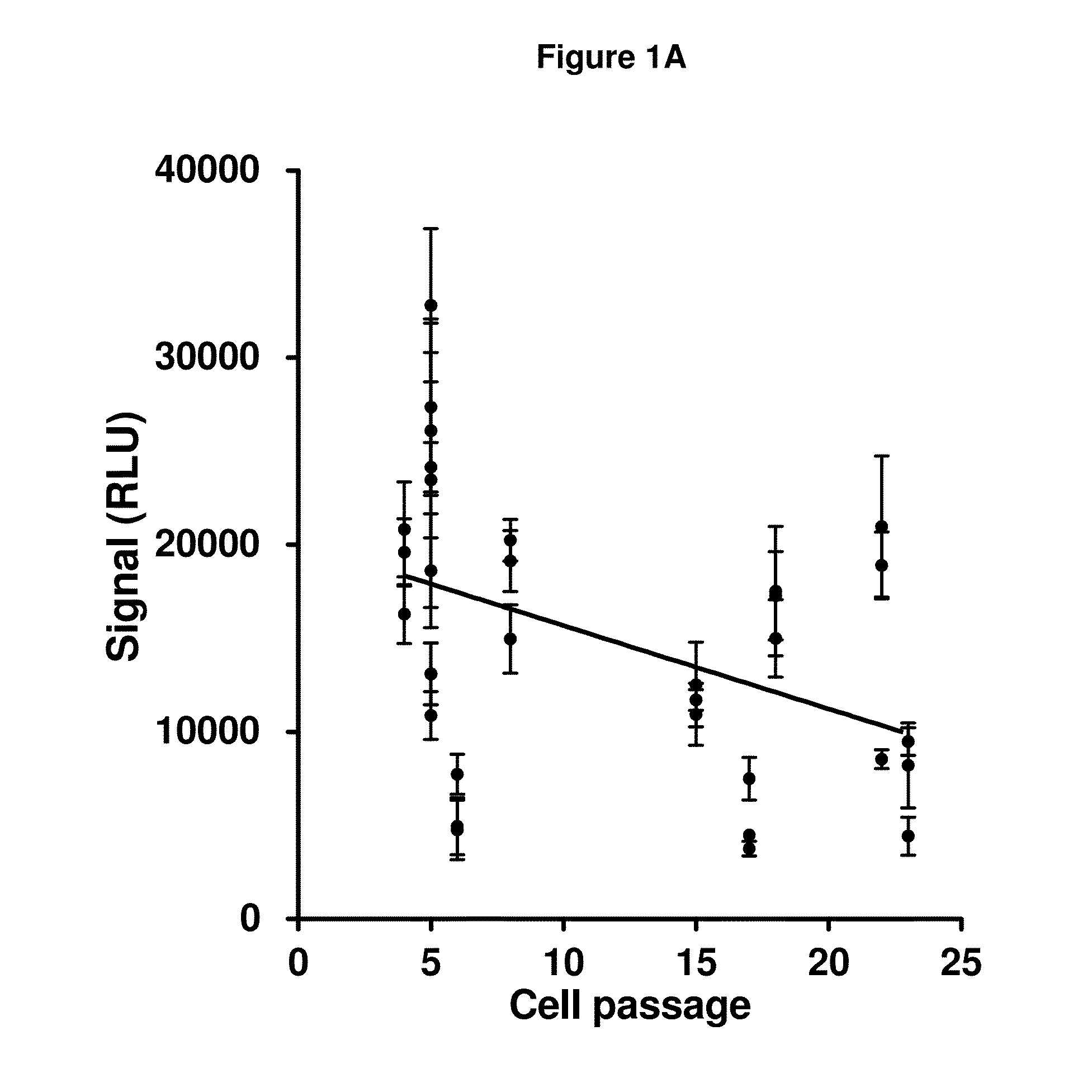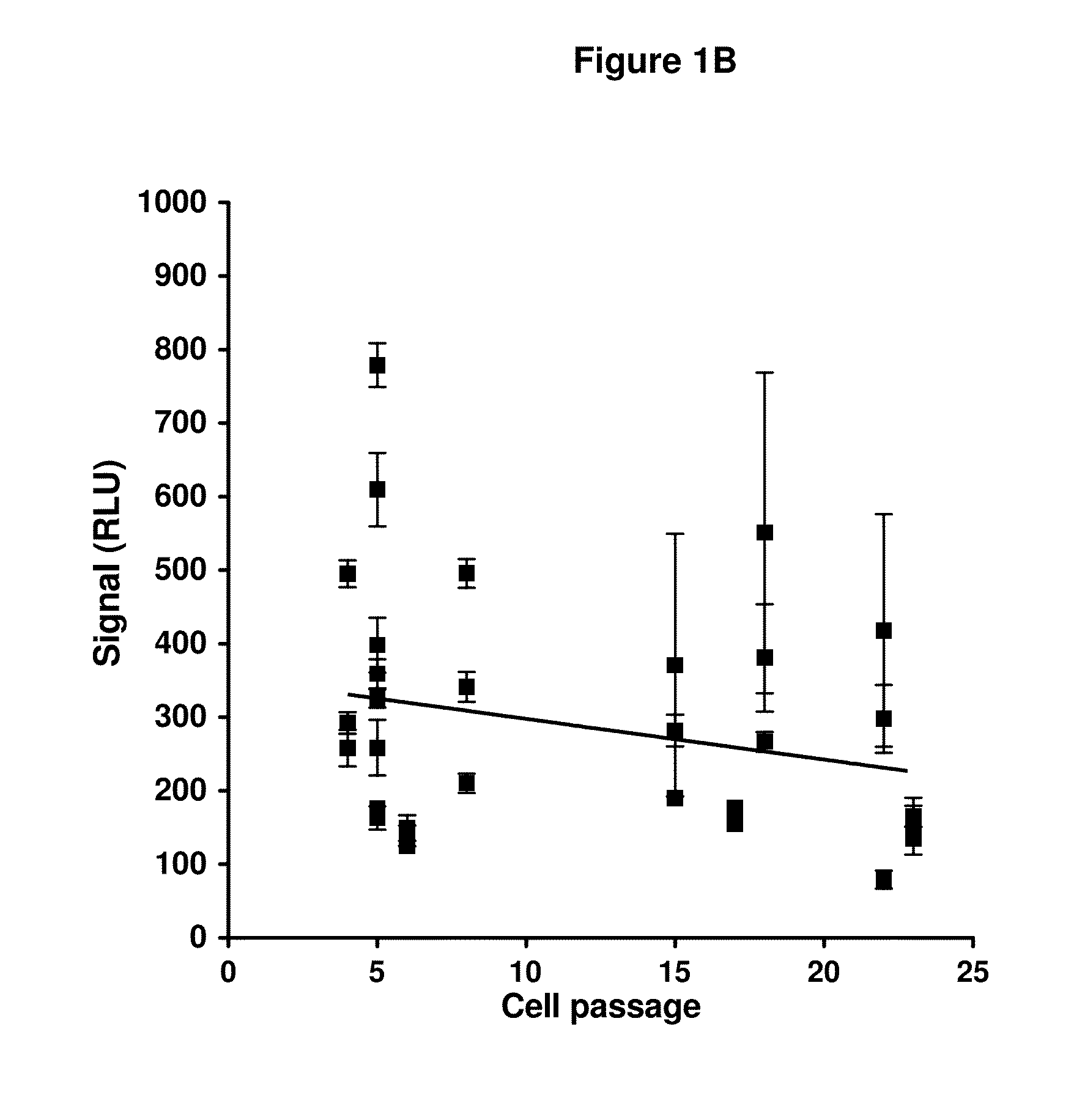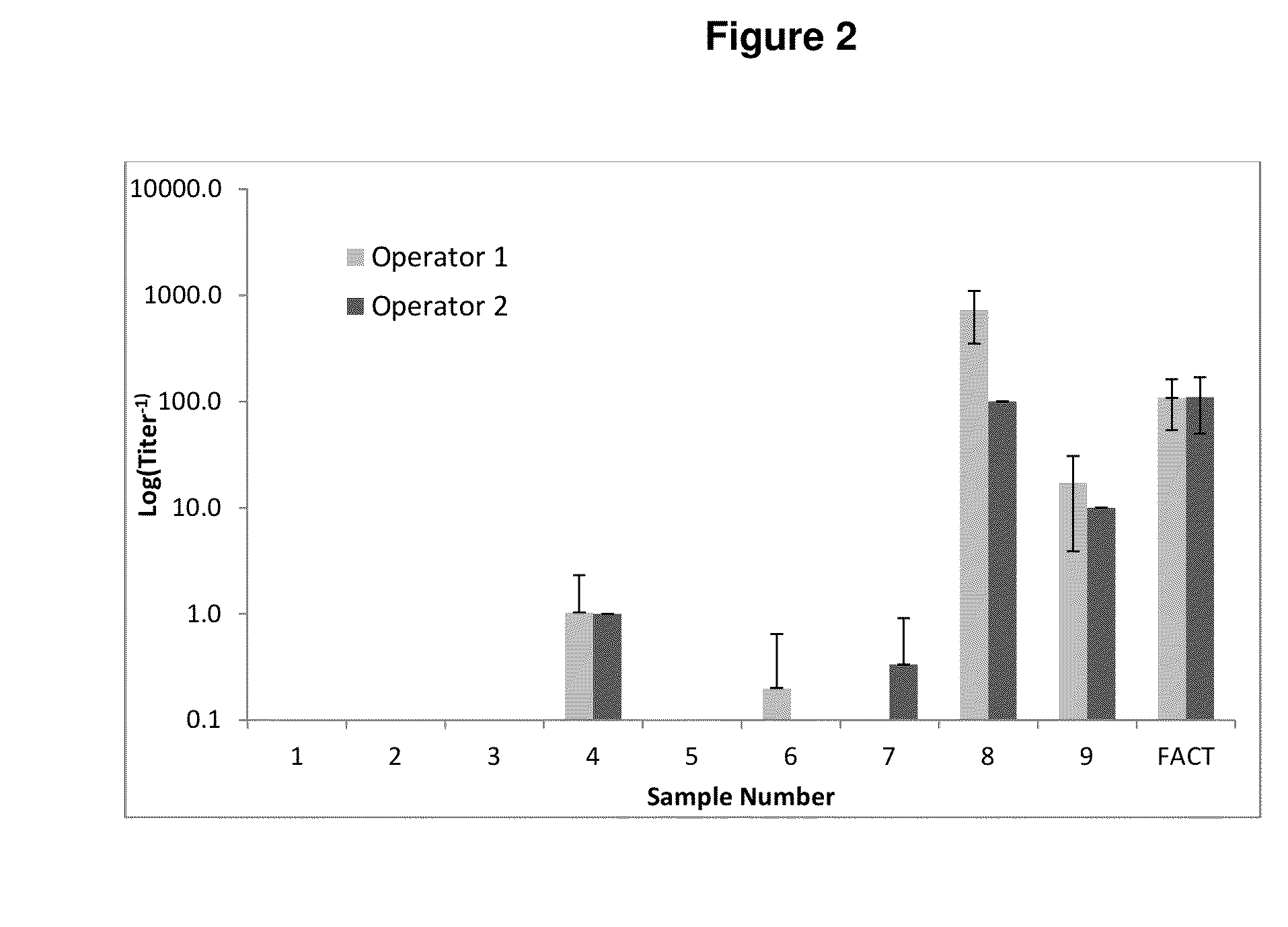Aav vector and assay for Anti-aav (adeno-associated virus) neutralizing antibodies
- Summary
- Abstract
- Description
- Claims
- Application Information
AI Technical Summary
Benefits of technology
Problems solved by technology
Method used
Image
Examples
example 1
[0105]This example outlines various studies which evaluate the performance of an anti-AAV neutralizing antibody (NAb) assay. Such an assay can be used to screen subjects prior to enrollment in AAV vector-mediated gene transfer studies, as well as monitoring the presen or amount of an anti-AAV neutralizing antibody during AAV vector-mediated gene transfer therapy, and post-AAV vector-mediated gene transfer therapy.
[0106]A substantial portion of the adult population has been exposed to wild-type AAV, typically through infection of the respiratory tract during childhood (Calcedo, 2011). Many people thus carry NAb to AAV that cross-react with the vector. An earlier clinical study (Manno et al. 2006) demonstrated that even a modest titer of NAb appears to block transduction when vector is delivered via the circulation. Other studies in non-human primates demonstrated that NAb titers as low as 1:5 completely block transduction of liver when vector is delivered through the circulation (Jia...
example 2
[0109]This example includes a description of certain materials and equipment used in studies described herein.
[0110]Materials: Test samples, subject source is serum or plasma (plasma must not contain heparin as anti-coagulant); PBS (phosphate buffered saline), sterile, Ca++ and Mg++ free, Invitrogen 14190-136 or equivalent; DMEM (Dulbecco's Modified Eagle Medium), Invitrogen 11965-084, or equivalent; FBS (fetal bovine serum), Hyclone SH30070.03IR, or equivalent; Penicillin / Streptomycin, Invitrogen 15140-122, or equivalent; L-Glutamine, 200 mM, Invitrogen 25030-156, or equivalent; cDMEM: complete DMEM (10% FBS, 1× Penicillin / Streptomycin, 1× L-Glutamine); Human Embryonic kidney cells stably expressing Ad-E4 (2V6.11 cells, ATCC Number: CRL-2784, below passage #26); Trypsin-EDTA (0.25% trypsin with EDTA 4Na) 1×, Invitrogen 25200-056, or equivalent; Density-gradient purified AAV-luciferase with capsid to vector genome (vg) ratio of 1, titered by dot-blot hybridization using luciferase p...
example 3
[0112]This example includes a description of an exemplary method of detecting and / or quantifying anti-AAV antibodies.
[0113]2V6.11 cells (HEK-293 cells genetically modified to express the E4 gene from adenovirus) are transduced with AAV-luciferase vector alone, or vector mixed with serum in a range of dilutions. Twenty-four hours later, luciferase expression is detected using a luminometer. Cells are handled in an identical manner for these studies and for the routine assay.
[0114]The results run in triplicate are compared to the readings from vector alone (control) to determine the serum dilution at which luciferase expression is equal to or less than 50% of expression for vector alone. This assay uses luciferase reporter gene rather than lacZ as the reporter gene because it is more sensitive at low levels of inhibition.
[0115]Criteria to assess success of a run include:[0116]1. Control plasma (pooled human plasma, FACT) yields a reading between 1:100 and 1:316 for AAV8 vectors and be...
PUM
| Property | Measurement | Unit |
|---|---|---|
| concentration | aaaaa | aaaaa |
| temperature | aaaaa | aaaaa |
| concentration | aaaaa | aaaaa |
Abstract
Description
Claims
Application Information
 Login to View More
Login to View More - R&D
- Intellectual Property
- Life Sciences
- Materials
- Tech Scout
- Unparalleled Data Quality
- Higher Quality Content
- 60% Fewer Hallucinations
Browse by: Latest US Patents, China's latest patents, Technical Efficacy Thesaurus, Application Domain, Technology Topic, Popular Technical Reports.
© 2025 PatSnap. All rights reserved.Legal|Privacy policy|Modern Slavery Act Transparency Statement|Sitemap|About US| Contact US: help@patsnap.com



